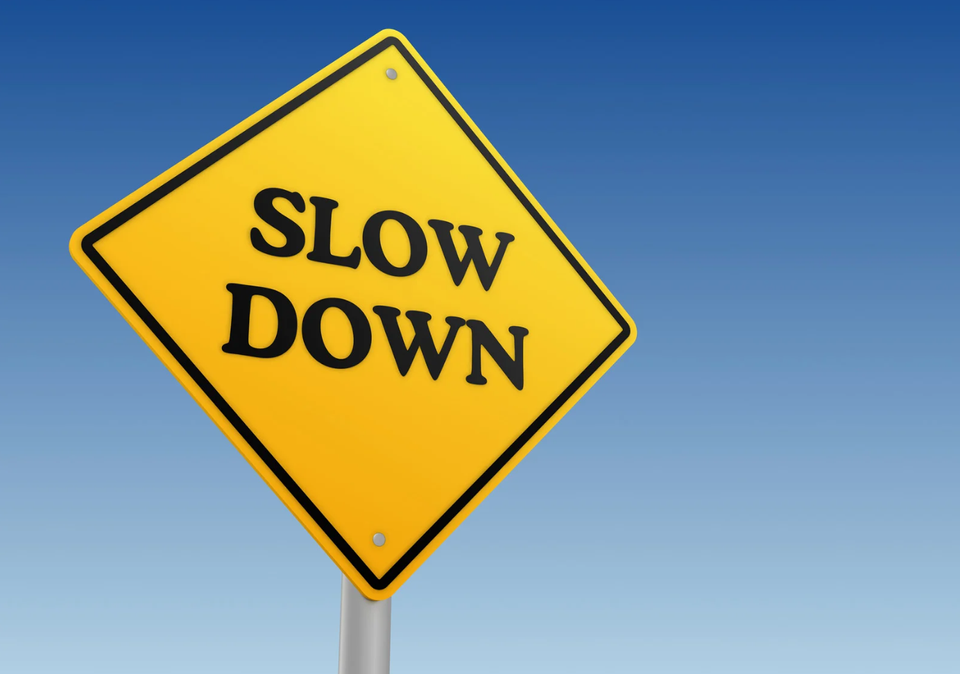Why Slowing Down Makes You A Better Leader

Let me guess—you move fast. You think fast. You decide fast. You run teams, crush deadlines, and answer emails while stirring dinner and reminding your kid to put on socks. You’re no stranger to momentum. In fact, you probably wear it like a badge of honor.
But let’s pause right there. Because while speed gets all the glory, it’s clarity that actually moves things forward. And clarity doesn’t show up when we’re sprinting.
In fact, most of the time? Speed kills it.
The Illusion of Urgency
Modern work culture has created a kind of unspoken religion around urgency. We burn through Slack threads, race to make decisions, and measure success in time-to-response. There’s a kind of high that comes from being in the swirl—like you’re needed, in demand, important.
But here’s the thing: urgency rarely offers long-term rewardings or sustainability. Especially in leadership.
When I’m coaching a client who’s feeling stuck, overwhelmed, or reactive, I almost always ask them to do one thing first: slow down. Take a beat. Step back from the noise. Because more often than not, the clarity they’re craving isn’t buried under a to-do list. It’s buried under velocity.
When we’re moving too fast, we default. We do what’s familiar, not necessarily what’s aligned. We listen to the loudest voice, not the wisest. We problem-solve from a place of fear or ego or pressure. And often? We skip right past the actual problem in our rush to fix it.
Leaders Who Pause, Win
The most grounded leaders I know don’t lead from a place of reactivity. They lead from rhythm. They’ve built in reflection as part of their workflow—not a treat, not a luxury, but a core practice.
You know what that looks like?
- Taking five minutes after a meeting to digest what just happened, not jumping to the next call.
- Asking “What’s actually needed here?” before delegating.
- Noticing your own emotional reactivity before you send the email.
This kind of pause creates power. Because when you slow yourself down, you stop outsourcing your leadership to speed. You start choosing instead of reacting.
Here’s a phrase I’ve said in so many coaching sessions I should have it needlepointed on a pillow:
“Fast is cute. Sustainable is sexy.”
Slowing down makes room for strategic clarity. It helps you see what’s essential and what’s noise. It brings focus back into the room—and honestly, there’s no better morale booster than a leader who knows where they’re going and why.
Speed and Self-Leadership Don’t Mix Either
Now let’s talk about you—just you, not the team, not the stakeholders. You, in your body, in your brain, navigating your own private hustle.
Speed is intoxicating here, too. Not because you love chaos (okay, maybe a little), but because it distracts you from discomfort. That internal itch—am I doing the right thing? Is this sustainable? Is this who I want to be?
It’s easier to check your inbox than check your gut.
But when you don’t pause long enough to take your own inventory, you lose access to your inner compass. You make choices from the outside in. And suddenly, your life feels like a calendar you don’t remember building.
The antidote? Not a sabbatical in Tahiti. (Although… tempting!)
Just slowness. Stillness. Space.
The self-leadership version of this looks like:
- Breathing before responding
- Saying no before saying yes
- Journaling when you want to numb-scroll
- Tracking how often you make decisions from fear
It’s not flashy. But it’s deeply effective. Clarity doesn’t chase you down. You have to become still enough to receive it.
“Slowness” Isn’t Slacking
To be clear: I am not anti-speed. I am pro-discernment. There are times to act quickly and decisively. But the bestdecisions I’ve seen leaders make—both professionally and personally—weren’t fast. They were clear. They were anchored. They were right-timed, not rushed.
If you're going to move fast, fine. But know why. Be sure. Don’t use pace to compensate for a lack of clarity.
And if you don’t know yet? That’s not a weakness. That’s wisdom knocking.
What Slowing Down Might Sound Like
- “Let me take a beat before I respond.”
- “I’m not sure yet. Can I sleep on it?”
- “I need five minutes to breathe and get centered before this next thing.”
- “Is this urgency real—or just inherited?”
These aren’t signs of a sluggish leader. They’re signs of someone who understands that alignment beats adrenaline.
So, Where Do You Start?
If you’re nodding along, but still twitchy at the idea of slowing down, start small.
- Schedule 10-minute reflection windows between meetings. Actually schedule them.
- Ask yourself once a day: “Am I leading, or just reacting?”
- Track what clarity feels like in your body. (Spoiler: It’s not buzzy.)
The more you practice this, the more you realize: speed is often a symptom of disconnection. And the cure isn’t to go faster. It’s to come home to yourself.
Because the real power move in today’s culture of overdrive?
Hitting the pause button.




